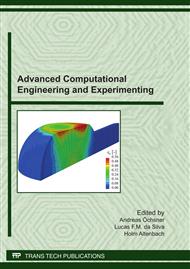p.7
p.13
p.19
p.25
p.34
p.40
p.46
p.54
p.64
Experimental Characterization of Hydrogen Embrittlement in API 5L X60 and API 5L X80 Steels
Abstract:
The present work aims to study the hydrogen embrittlement process in API 5L X60 and API 5L X80 steels. The tests were performed using two kinds of hydrogen sources to work with two conditions of hydrogen damage: environmental hydrogen embrittlement and internal hydrogen embrittlement. The mechanical behavior of API 5L X60 and API 5L X80 steels in tensile tests, with and without hydrogen, were studied. Under environmental hydrogen embrittlement conditions, the API 5L X60 steel presented a softening process observed by the decrease in yield strength and increase in its deformation. The API 5L X80 steel was more susceptible to the phenomenon due the deformation decrease of hydrogenated samples. In notched samples, both steels were susceptible to embrittlement as shown by the decrease in elongation. Under internal hydrogen embrittlement conditions, in both steels the changes in deformation were significant and can be attributed to changes in the hydrogen trapping due to the hydrogenation process used, the chemical composition and microstructure. It was observed that the fracture surface morphology of hydrogenated samples of both steels was ductile by microvoids coalescence, and that the distribution of dimples per unit area was higher in the API 5L X60 steel. It can be concluded, as reported in the literature, that the reversible hydrogen trapping observable in environmental hydrogen embrittlement is more damaging than irreversible hydrogen trapping, observable in internal hydrogen embrittlement.
Info:
Periodical:
Pages:
34-39
Citation:
Online since:
April 2011
Keywords:
Price:
Сopyright:
© 2011 Trans Tech Publications Ltd. All Rights Reserved
Share:
Citation:


